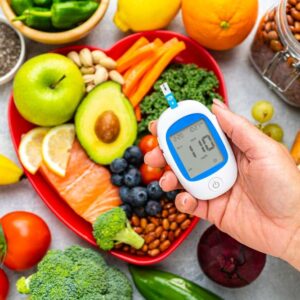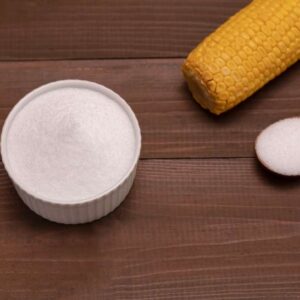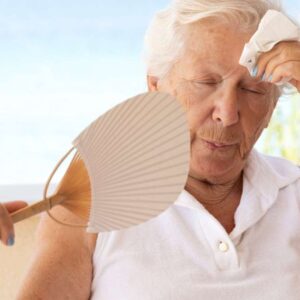
Get Poor Courtesy of the FDA and Big Pharma
Dear Reader,
$1,159.64 is a lot of money for most people.
It’s enough to be your mortgage, the down payment on a new car, the amount you need to finally pay off your credit card, or in some cases (like mine) — your entire clothing budget for a year.
For many of us, this would be an impossible monthly amount after paying living expenses like rent or mortgage, electricity, insurance, phone, groceries, etc.
What would you do if this were the extra cash you needed to maintain your health?
In a perfect world, your health wouldn’t come at such added expense.
For some, this has been your only option offered — forced into financial distress in order to sustain some semblance of health and further encouraged to stay there by fear of losing it all.
Here’s the catch…
This extra sacrifice might be all for naught. These folks maybe over paying for something not benefiting their health.
And what is worse, it is possible they could get better results with something that is a tiny fraction of the cost.
I’ll share a specific example in a moment…
$1,159.64 is the cost for a 30-day supply of second highest grossing pharmaceutical in America. 1
To put this in perspective, if you were looking for a drug worth its weight in gold — this one regularly surpasses the value of gold per milligram by 15 and a½ times.
So what could this drug be treating?
Cancer? AIDS? Alzheimer’s?
Nope.
The second-highest pharmaceutical sales belong to Abilify, an anti-psychotic used to treat schizophrenia.
Schizophrenia by the Numbers
From May 2014 to June 2015, Abilify pulled in a grand total of $7,238,451,779 in sales.2
Over $7 billion?!
Even at the gouging rate it costs to fill a prescription, are that many Americans diagnosed with schizophrenia to make such a huge number in sale?
As it turns out, there aren’t.
Only 1 percent of Americans have schizophrenia.3
OK, let’s crunch some numbers real quick.
So there are roughly 320 million Americans and last year there were roughly 8.8 million prescriptions written for Abilify.
8.8/320 = 2.75 percent.
That’s almost three times amount of people with a diagnosis is indicated for — meaning almost triple the profits for Big Pharma.
Maybe it doesn’t seem like a lot, but that’s millions of people taking a prescription that might be inappropriate for them.
What disorder are these millions of people getting a prescription for if only a third of patients are diagnosed with schizophrenia?
Plus, there are other effective psychiatric medications on the market at a tiny fraction of the cost.
One of these low-cost options we will talk about in a bit.
But first…
Who is approving this alarming rate of prescription?
The FDA, of course.
There Is Such Thing as Too Much Approval
The FDA has approved Abilify for uses beyond its treatment of schizophrenia. Since 2002, the FDA has approved Abilify for “off label” treatment of bipolar mania, major depressive disorder and autism.4
Wait a second…
A drug specifically intended to treat psychotic behaviors such as hallucinations, disorganized thoughts, and the inability to distingiuish reality from delusions is now a treatment for depression?
And it’s being given to children as young as 6 with autism?
That seems a bit unnecessary.
Also, people afflicted with bipolar disorder can swing between manic and depressive states — changing symptoms very quickly. The key to effective medication management in bipolar is to stabilize the frequency of mood swings. Taking a medication for just one of the cycles seems like a worthless intervention.
Plus, how are patients supposed to end medications between cycles?
So here are Big Pharma’s and the FDA’s answers: Add Abilify as an adjunct therapy to the already prescribed medications for these disorders.
Adjunct therapy means adding a treatment to the primary treatment in order to increase the effectiveness of the primary treatment.
Western medicine often makes use of adjunct therapy. For example, most cancer patients undergo more than one treatment, i.e., surgery and chemotherapy.
Adjunct therapy can work in some cases, especially with mood disorders. Patients can benefit greatly from adjunct therapy when the treatments are appropriate and affordable.
During my professional mental health experience, I saw many cases where medications worked together to decrease symptoms but were not as effective alone.
To refer back to the bipolar example, it was common for patients to take a mood stabilizer with an anti-depressant.
And for many people suffering from a mood disorder, adjunct therapy may work as well. Sometimes two medications are better than one, especially if it means preventing suicide.
The issue isn’t the use of adjunct therapy, it’s the high-priced prescriptions indicated for it.
I’m not the only one who thinks adding an $1159.64 prescription to mood disorder treatment seems a little greedy.
Dr. Richard A. Friedman stated in an article in The New York Times about the over prescribing of antipsychotics:
“If a patient has not gotten better on an antidepressant, for instance, just taking it for a longer time or taking a higher dose could be very effective. There is also very strong evidence that adding a second antidepressant from a different chemical class is an effective and cheaper strategy — without having to resort to antipsychotic medication.” 5
Bingo.
Your prescription costs shouldn’t force you to take out a line of credit. There are cheaper and effective medications available that are likely better suited for a diagnosis.
One of these options maybe hiding in your water.
Elemental Answers
Studies have shown a long used psychiatric medication and a natural element is still one of the most effective and cheapest options for the treatment of mood disorders.
What could be a natural and functional treatment?
Lithium.
While lithium might conjure up thoughts of 1970s psych wards filled with zombie-like patients so medicated they can’t even speak for some, this is far from the truth.
Referenced for psychiatric uses since the 1870s, lithium continues to be a proven mood stabilizer.6 It can help to even out moods and decrease impulsive and dangerous thoughts.
The journal BMJ (formerly the British Medical Journal) published a study concluding:
“Lithium is an effective treatment for reducing the risk of suicide in people with mood disorders. Lithium may exert its antisuicidal effects by reducing relapse of mood disorder, but additional mechanisms should also be considered because there is some evidence that lithium decreases aggression and possibly impulsivity, which might be another mechanism mediating the antisuicidal effect.” 7
In fact, some studies in communities with higher levels of lithium in drinking water have even shown a decrease in crime rates and suicide.
I am not suggesting that lithium should be the new fluoride — it’s just interesting data.
At $32.12 for a 100 -tablet supply of the highest strength, lithium is an affordable and accessible choice for many people. 8
And here is the kicker — many pharmacies offer lithium generics for as little as $4.9 The more affordable choice is obvious in this case.
But sometimes the most affordable and most effective prescription is not as apparent.
Profitability Over Health – the American Way
While the Abilify- lithium case is mental health specific, it proves Big Pharma and the FDA are not interested in saving you money or providing the best medication options for you.
Adjunct therapy is an option for most medical arenas. It may already be affecting your treatment and your wallet.
If you find yourself with a prescription costing you more than you can afford or more than you feel is fair, see if you can find a more affordable solution.
Generics are a go-to choice for saving money on prescriptions but often aren’t that cheap. The generic for Abilify is still over $500 with a coupon.10 That’s a savings, but it still doesn’t put the drug in the affordable range for most of us.
There are also websites like Drugs.com or GoodRx.com that will show you the lowest available price for a prescription and often offer coupons.
If adjunct therapy becomes a reality for you, do your homework:
- Look up the medications and find out what the FDA has approved it for.
- See if you can find any studies on the medication. PubMed is helpful for this.
- Check the prices.
Once you have evaluated all of these factors, you can talk to your doctor if you feel a change in your prescriptions is need. Communication is the key to good healthcare, let your doctor know your concerns — this is the only way to explore different options.
If you have any questions or comments, please write me! nmoore@lfb.org
Live well,

Natalie Moore
Managing editor, Living Well Daily
P.S. Would you like to hear more about the health benefits of taking lithium at a low over-the-counter dose? Do you have a personal experience with expensive prescription therapy you would like to talk about? Contact me: nmoore@lfb.org
Citations
[1] Abilify Prices, Coupons and Patient Assistance Programs
[2] Medscape
[4] Aripiprazole Indications: FDA-Approved and Off-Label Uses
[5] A Call for Caution on Antipsychotic Drugs
[7] Lithium in the prevention of suicide in mood disorders: updated systematic review and meta-analysis
[8] Lithium Prices, Coupons and Patient Assistance Programs
[9] Target Pharmacy
[10] Should We All Take a Bit of Lithium?
Written By Natalie Moore
Natalie Moore is a dedicated health researcher with a passion for finding healthy, natural, and science-based solutions. After a decade of direct healthcare experience in western and natural medicine, she was involved in public health research before joining Living Well Daily.
View More Free Articles
Stop Obsessing Over Diet Trends
Can we stop with the endless diet debates already? Every other week there’s a new headline shouting about which diet is best for weight loss, heart health, or diabetes. Paleo, keto, low-carb, high-protein… it’s exhausting. And now, a new meta-analysis is out comparing the Mediterranean diet, the DASH diet, and something called AHEI (that’s “Alternative...
A New Reason to Ditch Processed Junk
If you’ve ever walked the inside aisles of your local grocery store and thought, “This is all just junk,” your instincts were spot on. A new study published in the journal Thorax just added another red flag to the list of dangers linked to ultra-processed food—a 41 percent higher risk of lung cancer. That’s right....
When Being Winded on Stairs Is Serious (And When It Isn’t)
I had an athlete visit me recently because he experienced shortness of breath while climbing stairs. He is in great shape, so he was worried about what it might mean. “Doc,” he said, “I run five miles three times a week. Why am I huffing and puffing after two flights of stairs?” His concern is...
Study EXPOSES Hidden Danger Lurking in Your Car
We think of our homes and cars as safe havens. But according to a startling new study, they may be flooding your lungs with microscopic plastic particles—every single day. Researchers in France recently found that adults inhale an average of 68,000 microplastic particles daily from indoor air alone. To put that in perspective, that’s about...
Mailbag: Is Modern Food Making You Snore?
“What can cause snoring, and is there a way to correct this issue?” —Seeking Silence Hi Seeking, Snoring happens when the soft tissues in your throat relax and vibrate as air passes through during sleep. While several factors can cause snoring—from sleep position to nasal congestion—I want to share one trigger that might surprise you....
Simple Food Swap SLASHES Dementia Risk 28%
Let’s be honest… who would jump at the chance to cut their dementia risk by 28 percent. And no, you don’t need to run marathons, survive on broccoli, or learn to play the zither (whatever that is) to make it happen. All it takes is one easy swap—something that’s probably already in your refrigerator. Researchers...
This SMART Floss Exposes Hidden Health Danger
Scientists have created dental floss that doesn’t just clean between your teeth—it also tracks your stress while you’re flossing. Now, I know what you’re thinking… “Great—now even flossing is going to stress me out by telling me how stressed I am.” But this fascinating new tool from Tufts University could be a game-changer for understanding...
Is This "Safe" Sweetener Damaging Your Brain?
The headlines are alarming… “Popular Sugar Substitute Linked to Brain Cell Damage” and “Erythritol Could Damage Critical Brain Barrier” are just two of the dozens I’ve spotted recently. But before you toss every sugar-free product in your pantry, let’s take a closer look at what this study actually shows—and what it doesn’t. The latest research...
This Summer Threat Could SPIKE Your Blood Sugar
Picture this… It’s another scorching hot summer day. You crank up the air conditioning while watching the weather forecast, which predicts yet another “record-breaking” heat wave. It’s starting to feel like just another miserably uncomfortable summer. But what you might not realize is that—if you have diabetes—those rising temps could do far more damage to...
Move Over Yogurt—5 Foods That Pack MORE Probiotics
Let’s talk about your gut. The microbiome is the collection of trillions of bacteria and other tiny organisms that live in and on your body—especially in your gut—and help keep you healthy. I’ve written often about how vital it is to maintain a healthy microbiome. And you might have dutifully added yogurt to your shopping...









